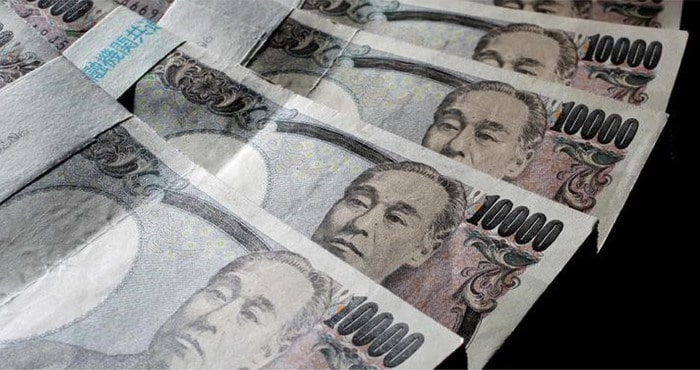Chapter 1 - Introduction to the Forex Market
Lesson 1.2 - What is PIP?

We previously explained the formula in which currency pairs and their rates are written. When you trade currencies, you will buy the currency at one price and sell it at another.
Currency prices change in fixed ratios, which are the points. The higher difference between the sale price and the purchase price means that you sold at a price that is several points higher than the purchase price, and the difference between the selling price and the purchase price represents the size of your loss or profit.
The point represents the lowest value of change in the market and is the fourth number after the decimal point. This rule is general for all pairs, except for the yen pairs.
How can you know the difference in points (spread) between the selling price and the buying price? and whether this spread represents profit or loss?
In order to be able to calculate the number of points for each price movement, you need to use the following three equations for each type of currency:-
to determine the spread for the Euro (EUR) and the British Pound (GBP) ,the following formula helps you to identify the spread between the buying and selling prices of the Euro and the British Pound.
Spread = (Selling Price - Buying Price) * 10000
If the result is positive, the spread represents profit, and if the result is negative, the spread represents loss.
Example (1):
Suppose you bought the Euro at EUR / USD = 1.2570, and you sold it at EUR / USD = 1.2680
What is the spread between the buying and selling price? Does it represent profit or a loss?
The answer:
Spread = (Selling Price - Buying Price) * 10000
= (1.2680 – 1.2570) * 10000 = 110
That is, you sold at a profit of 110 points. (the sign is obligatory).
Example (2):
Suppose you sold the Pound at GBP / USD = 1.3200,
then you bought it at GBP / USD = 1.2950
What is the spread between the buying and selling price? Does it represent profit or a loss?
The answer:
Spread = (Selling Price - Buying Price) * 10000
= (1.2950 – 1.3200) * 10000 = - 250
That is, you ended the deal with a loss of 250 points. (Negative sign).
- This is the basic way to calculate the number of points for all pairs that combine any of the following currencies (US Dollar, Australian Dollar, New Zealand Dollar, Canadian Dollar, Euro, British Pound, Swiss Franc).
To determine the spread for the Japanese Yen

- The Yen remains excluded from the previous rule, because it has a special nature in the calculation. The difference in the Yen calculation is due to the fact that the US Dollar consists of 100 cents, but one unit of the Yen is equivalent to a cent of the US dollar. Thus, when you the price of the Yen is offered, you'll find that it equals a number in hundreds, so the price of the US Dollar against the Yen is
USD / JPY = 119
Using the following equation, you can find the spread between the buying and selling prices for the USD/JPY pair.
Spread = (Selling Price - Buying Price) * 100
If the result is positive, the spread represents profit, and if the result is negative, the spread represents loss.
Example (1):
Suppose you bought the Yen at USD / JPY = 107.35,
then you sold it at USD / JPY = 109.20,what is the spread between the buying and selling price? Does it represent profit or a loss?
The answer:
Spread = (Selling Price - Buying Price) * 100
= (109.20 – 107.35) * 100 = 185
That is, you ended the deal with a profit of 185 points.
Example (2):
Suppose you sold the Yen at USD / JPY = 110.45,then, you bought it at USD / JPY = 109.30
What is the spread between the buying and selling price? Does it represent profit or a loss?
The answer:
Spread = (Selling Price - Buying Price) * 100
= (126.03 – 125.27) * 100 = -115
That is, you ended the deal losing 115 points.
The following question may come to your mind:
I know that I sold a currency with a profit of 50 points , how much does that mean my actual profit worth?
The answer: You will shortly know ... !!
The important thing now is to know how to calculate the spread between the buying and selling prices and whether you achieve profit or lose.
By using the above two equations, you will simply be able to calculate the number of profit or loss points.
You should know that after a short period of practice, you will not need to go back to the previous equations, as you will be able to calculate the spread immediately and you will forget the previous equations once and for all !!
However, we put it in front of you as a beginner and we are sure that you will soon be able to do without it !!
The fifth decimal place number
One of the developments witnessed by trading platforms in the recent period is the availability of trading in currency rates, so that a small change less than a point appears and affects the profit and loss calculation as well, which is the fifth decimal place number.
EUR/USD = 1.12895
Now, it is normal for you to see the prices written in this way. The fifth decimal place number, written in a small size, is a value less than the point, and the brokerage company usually asks you, while registering your account, whether you want the fifth decimal place number to appear or not.
There is no deviation from the earlier explained formula used for calculating the points, because the point is always the fourth decimal place number, and the second decimal place number for the Yen pairs.


 English
English





